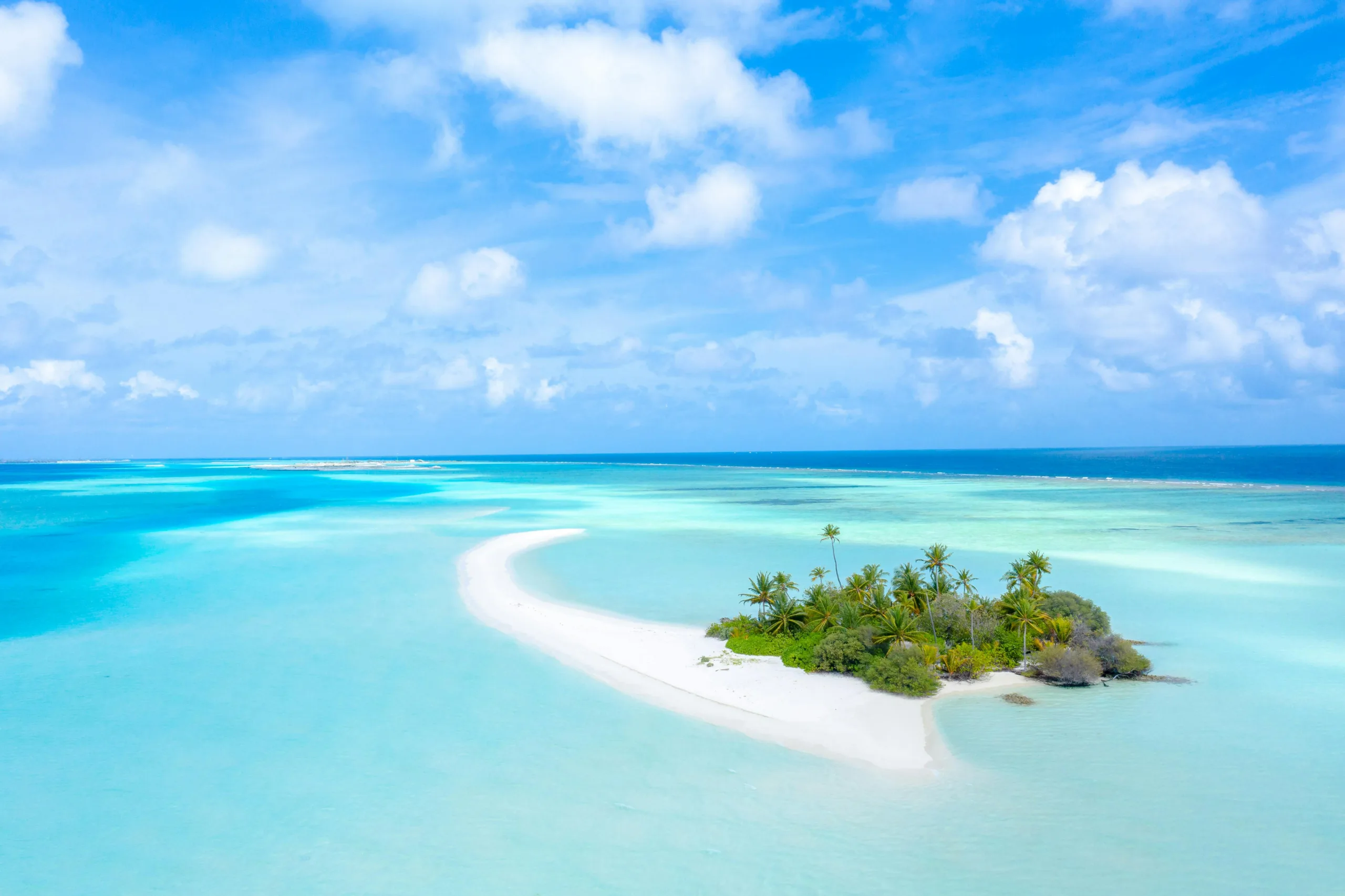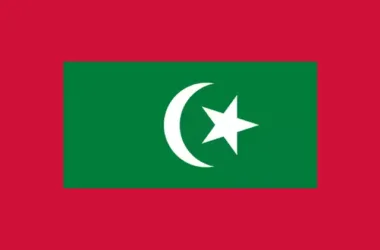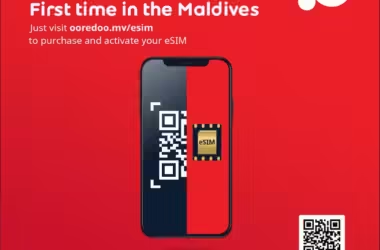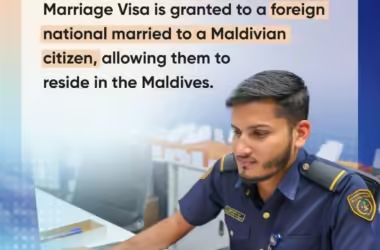If you are planning your next vacation this year, try to experience the cultural activities in Maldives. You cut your time on the drawing board for this year’s vacation bucket list by visiting these islands. You will love flying to this paradise rich in history and culture.
Historical records reveal ancient travelers and traders from India, Africa, and countries in the Arabian Peninsula settling on this group of islands.
Each group of seafarers slowly built the diverse Maldives customs and culture that permeated its present population and influenced the following 14 cultural activities uniquely Maldivian.
Travel is also easy. Most major international airports have direct flights to Male International Airport. It’s no longer a hassle to travel directly to this island paradise. The fare may vary from place to place, but one thing is sure: every amount of money you spend on this trip is definitely worth it.
If you plan to enjoy the cultural activities in Maldives to their fullest, you must see these traditional events that make up this magnificent island’s artistic and cultural foundation.
Now, on to the list of activities you must see and experience when traveling to this island paradise.
1. Bodu Beru
If you are going to Maldives, it’s good to experience the “Bodu Beru” or “Baburu Lava dance”, one of the best-known cultural activities in Maldives. It’s a folk dance influenced by African sailors who settled on the island during the 11th century.
“Body Beru” means big drums, which is also the main instrument used in this dance. Performers for this dance are a group of 10 to 15 drummers, with a lead singer and bell players.
Aside from drums, they also use a bamboo instrument with holes that make a raspy sound when scraped.
The dance starts slow, but the dancer’s moves are already upbeat. The music speeds up and ends with a showdown between two dancers, flexing their dance skills as they keep up with the rushing rhythm.
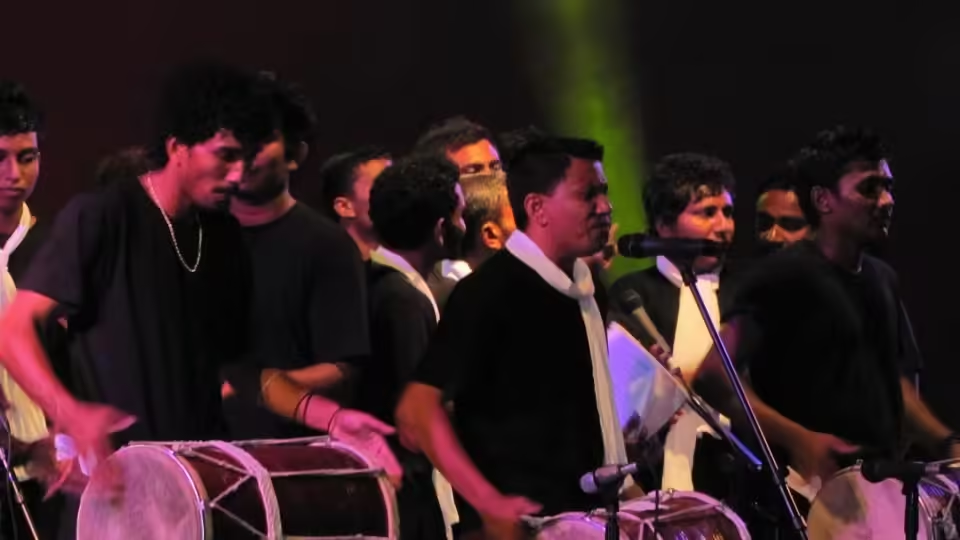
2. Dhandi Jehun
The second on this list of Maldives customs is another lively drum and dance song performed during festivals like Independence Day and Bodu Eid.
The “Dhandi Jehun” is a folk dance from Malik or Minicoy Islands north of the Maldives. The dance and its many styles involve groups of 20 to 30 performers.
The “Dhandi Jehun”, or “Malik dhandi,” starts with a leader singing the traditional “Thaara” or “Unbaa” and then is joined by the rest of the performers singing the chorus while moving with the beat.
Each performer holds sticks (Dhandi), which they rhythmically strike with another person in front of them. The Dhandi Jehun performance is a rhythmic show full of movement and colors, especially the performer’s costumes and the decorations attached to their “dhandi.”
Video: Dhandi jehun
3. Gaa Odi Lava
Originally a work song, the “Gaa Odi Lava” is a song that celebrates the joy experienced by a group of people overcoming a task together. When you hear the music of this song, you’re engaging in a cultural history that started during Sultan Mohamed Imadudeen I reign from 1620 to 1648 AD.
According to Maldives history, Sultan Mohamed wanted to build a seawall around the island where the capital city of the Maldives is situated. He gathered a group of men and divided them to carry different “Odi” or containers to haul coral stones from the surrounding reef.
After work, the workers would visit the sultan before ending their duty for the day. Afterward, the laborers show their happiness through song and dance accompanied by rhythmic beats called “Dhigu Magu Negun” in the royal courtyard. This celebration of accomplishment laid the foundation of the Gaa Odi Lava dance song, which is popular today.
The dance has evolved through the ages but usually involves rhythmic movements by performers carrying distinctive rods. They move in two parallel rows, singing and dancing in unison.
The workers traverse the courtyard until they reach the palace, and the dance speeds up.
The Sultan starts giving the workers gifts placed in containers.
The Gaa Odi Lava lyrics were originally Arabic, but today, they have gradually adapted to the local language and are now part of the famous cultural activities in Maldives.
4. Koadi Kendun
“Koadi Kendun” is one of the unique events that take place to celebrate Eid. It’s an event that traces its roots as far back as the island’s history can provide.
This event revolves around the “Koadi,” a wooden or metal stick wrapped with palm leaves, colorful fabric, and flowers tied up on top of a coconut tree.
The event performers adorned themselves with sarongs and clothing made from palm leaf. They parade through the streets like champions, ready to retrieve the “koadi” from the group of women guarding it. The event resembles a “cat-and-mouse” chase as men try to snatch the statue discreetly.
The one who succeeds in this task is hailed by the community and praised for his bravery. He is then ceremoniously immersed into the sea, bathed by the women who guarded the “koadi,” and given a feast for a king. The following morning, the victorious “warrior” joins one of the awaited cultural activities in Maldives, the traditional parade of Alhi Dheli Maali.
5. Thaara Jehun
It’s a given that surrounding countries heavily influence Maldives culture. However, it doesn’t mean the Maldives have no unique identity. One example of something uniquely from the Maldives is the “Thaara Jehun”.
This Maldives customs dance is performed by 22 men divided into two groups, forming a parallel line. These men wear white clothes and dance to the beat.
They then sit adjacent to each other, dancing and singing. Drummers go between the rows and beat a catchy rhythm, setting the tone of the dance.
The dancers begin slow but end in a speed rush. The drummers beat furiously while the men dance at a rapid pace. It’s a spectacle to see and a must to experience this dance.
Thaara Jehun is one of those cultural activities in Maldives that is performed during national gatherings and events.
Video: Thaara Jehun
6. Bandiyaa Jehun
After giving the men all the fun, now is the time for the women to start dancing. The “Bandiyaa Jehun” is a pot dance that resembles that in India. The dancers use a metal water pot or Bandiyaa. The women wear metal rings, which they use to make sounds as they tap the metal pots.
The women wear long skirts called “Dhigu Hedhun” and dance harmoniously to a melody. The dance has evolved throughout the ages and incorporated changes that characterize the modern version of the Bandiyaa Jehun.
However, despite these changes, the dance still focuses on the elegance and beauty of young women. The dance moves show their grace while performing this iconic Maldives tradition.
Video: Bandiyaa Jehun
7. Langiri Jehun
During the early part of the 20th century, Sultan Shamsuddin III introduced the “Langiri Jehun” dance, and it became one of the popular cultural activities in Maldives.
The Langiri Jehun shows a tinge of influence from Zambia and its Mganda dance. However, through the years, the Maldivians fused the dance with unique customs, making this dance a beloved cultural gem.
This relatively modern dance involves young men dancing to the music of the Langiri as they perform during theater shows at night. During the sultan’s reign, the young men preferred the Langiri to the popular Thaara, which cemented this dance into the Maldives tradition.
The Langiri Jehun is an exciting dance characterized by the performers carrying two sticks, each a foot long, known as “Langiri Dhandi,” adorned with bright flowers pinned at the top.
During the dance, performers group themselves into two rows of either 6 or 12 dancers. Each performer strikes their sticks together in rhythm with the beat. They then strike their partner’s sticks, all rhythmically and in tune with the music.
A singer at the front line of the right row leads the dance, accompanied by instrument players. The dance may last for an unspecified period but may take up to six or seven songs before ending.
Video: Lagiri Jehun
8. Bolimalaafath Neshun
The “Bolimalaafath Neshun” is a Maldivian dance performed by women that traces its origins to a time when females brought gifts to the Sultan during festivals like Eid. The gifts, usually shells, are kept inside a “Kurandi Maalafath”, an intricately decorated yet tightly sealed vase. The women carrying these containers wore colorful traditional costumes and bathed in smoke from burning incense.
The performers are usually a group of about 24 women. They form into smaller subgroups, either pairs, trios, or quartets, and make rhythmic movements accompanied by singing as they parade toward the Sultan to present their gifts.
The selection of songs usually focused on hymns with patriotic messages. In the late 1960s, after the abolishment of the monarchy, the Bolimalaafath Neshun was restricted to stage show performances. However, despite the political change, this dance is still one of the most popular cultural activities in Maldives, especially among female performers.
Video: Bolimaafath Neshun
9. Bodumas Beynun
The “Bodu Mas Beynun” is a cultural event influenced by the island’s thriving fishing community. This event is usually held during the Eid holidays and is a way to celebrate a bountiful catch.
The Bodu “big” and Mas “fish” is a yearly celebration where fishermen catch a large fish made of coconut palm leaves. The “Bodu Mas” symbolizes the bountiful sea, a source of sustenance and nourishment for the Maldives.
After this fishing performance, a group of dancers wearing terrifying costumes act as evil spirits trying to wrestle the bountiful catch from the fishermen.
The event tells a story of the fight between the people and Maali spirits to catch the giant fish. As the story goes, a hero becomes instrumental in the people winning against the spirits and getting a bountiful harvest.
10. Hichchah Vadaigathun
The last 10 days of Ramadan are a time for the royal processions or the Hichchah Valdaigathun. Here, the monarchy celebrates its wealth and splendor.
This parade is led by the sultan and his fully armed royal guards, all colorfully dressed. Accompanied with them is an entourage of people in costume dressed like courtiers to the sultan.
The sultan visits a single tomb in every city district throughout the 10 days celebrations. At night, he would go through each district and change clothes with the colors associated with the area he was entering.
Examples of colors include blue for the Henveiru district, Grey for the Macchangoalhi district, Green for the Galhohu district, and Pink for the Maafannu district.
The sultan rarely changes clothes, but it is still a fascinating Maldives tradition. The Hichchah Valdaigathun parade celebrates the Ramadan customs practiced in the Maldives for much of their history.
Despite the loss of popularity after the monarchy’s fall in 1968, this musical extravaganza and communal festival is still part of the famous cultural activities in Maldives.
11. Fathigadu Neshun
Another Maldives tradition is performing the “Fathigadu Neshun”, a folk dance for men done in the evening. This folk dance involves a group of men holding two bamboo sticks struck together rhythmically to the tune led by a song leader. The song selection for this dance is usually the epics, played by drummers and other percussion, to which the dancers match the pace.
The entire dance tells popular epic stories rendered in musical form. One famous epic is “Burunee Raivaru”, a story of a sultan who went on an epic journey to search for his wife.
12. Kadhaa Maali Neshun
The “Kadhaa Maali Neshun” is a unique dance from Kulhudhuffushi Island, south of the Thiladhunmathi Atoll. This dance involves beating a copper plate with a rod or Kadhaa. The origin of this dance is a ceremony that drives away evil spirits that bring severe illnesses plaguing the communities on the island.
A group of over 30 people in different colorful costumes perform this dance accompanied by drum beats and synchronized movements. The performers wear costumes that symbolize evil entities called “Maali.” The dance was part of the traditional exorcism practice of the Maldivian elders as they roam through the community to ward off evil spirits.
The dance starts after an evening prayer and lasts for three nights, reassuring the community that they have done everything possible to safeguard the island from evil. Alongside this practice, people engage in different dances and music, eventually becoming part of the modern Kadhaa Maali dance, which is part of the cultural activities in Maldives that you can enjoy.
13. Maali Neshun
“Maali Neshun” is all about a Halloween-like celebration of ghosts and goblins done in the form of a dancing game. The players dress up like ghosts or any entity from Maldivian legends and begin scaring people in the community. The players walk through the streets with the intent to terrify onlookers with jump scares and surprises.
The event is one of the most popular cultural activities in the Maldives. The festival is packed with fun and entertainment during the Eid celebrations.
The streets of Male become alive with music, dancing, feasting, and fireworks. It’s a fascinating event for travelers hoping to experience fun in a traditional Maldivian celebration they’ll never forget.
The origins of this practice are said to come from West Africa, in the Benin Republic, from the Zangbeto tradition. You can also notice similar traditions in neighboring countries like Mali, Togo, the Ivory Coast, and Senegal.
Video: Maali Neshun
14. Maafathi Neshun
The “Maafathi Neshun” is a folk dance from the Maldives tradition similar to the Langiri. A group of 20 women usually performs this dance. At the start of the dance, the women form two lines while each carries a semi-circular band decorated with flowers.
The performers hold these bands over their heads and twist them into different patterns as they dance. The Maafathi Neshun also showcases Maldivian women, their beauty and grace. The Maafathi Neshun is one of the main cultural activities in Maldives that you must not miss.
Conclusion
When you travel, you should not only look for sights but also experience the cultural activities in Maldives. And what better way to experience culture than to attend traditional festivals and celebrations held by the community?
The Maldives is packed with must-see cultural activities; the most iconic ones are listed in this article. Fourteen amazing festivals and dances encapsulating thousands of years of Maldives culture are performed beautifully right in front of your eyes, and it is a sight to behold. That is what awaits you in this island paradise.
The unique cultural activities in Maldives mainly came from neighboring countries. However, those influences were developed by the artistry and creativity of the Maldives people.
Each special activity listed in this article shows the rich tradition in music and dance that the Maldivian people have. The rhythm-based music and catch beats emphasize the need for group participation, a communal effort for the organization. Everyone is essential to the community and has a place in society and a part to play.
Despite the political changes in the country, the Maldives continue to uphold its identity as one with a unique set of cultural traditions in the area. If you need a phrase encapsulating the entire Maldives cultural identity, that phrase is “an island of song, dance, diversity, and cooperation.”
So, the next time you plan on traveling to interesting places in the Indian Ocean, don’t forget the Maldives. You can find a ton of cultural gems on these islands, and you will remember every day you spend on this tropical island paradise.

